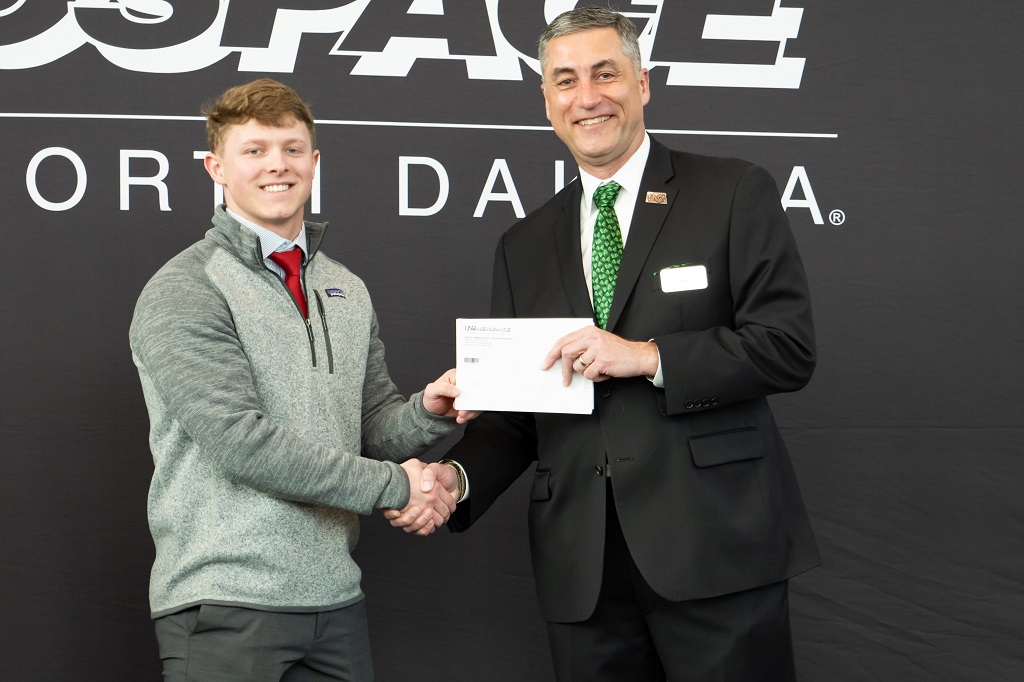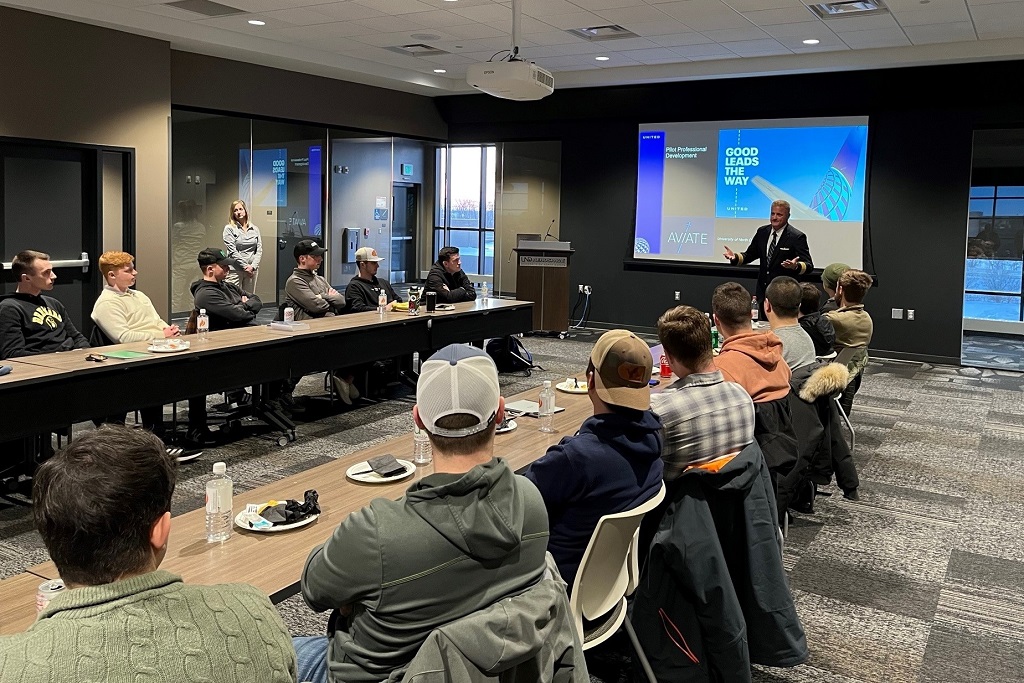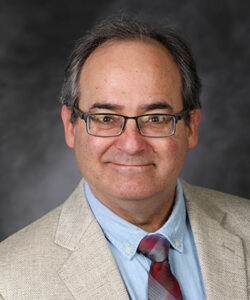With Vets2Wings program, student veterans soar
Program to help veterans pay for and complete flight training has been an unqualified success, UND student veterans say

Some national problems seem to defy solutions.
But judging by the enthusiastic responses of the Vets2Wings participants at UND, the commercial airline pilot shortage isn’t one of them.
“Vets2Wings has significantly helped me in my pursuit of a career in aviation,” said Stuart Hutt, a UND aviation student and Minnesota Army National Guard veteran.
“I thought it was too good to be true,” said Brycen Lunak, another aviation student and a North Dakota Air National Guardsman. “I am glad I was wrong. … This program can be the extra push that some vets may need to realize that a career in aviation is not only possible, but quite feasible.”
Agreed Wesley Mattson, another North Dakota Air National Guardsman and UND aviation student, “Many veterans don’t know what to do when they get out of the military, and even those who are interested in aviation never seem to pursue it because of the cost. V2W is going to attract not only aviation enthusiasts but also many others, as it’s a path into a reliable, well-paying industry” at greatly reduced cost to the student.

FAA-backed and UND-based
Vet2Wings is a cooperative agreement between UND and the FAA to help U.S. military veterans pay for flight training and successfully transition to the airline workforce.
The agreement was signed in the fall, and so far, it has been exclusive to UND. But in March, U.S. Sen. John Hoeven, R-N.D. — who was instrumental in securing the program’s initial $2.5 million funding — introduced with Sen. Tammy Baldwin, D-Wis., the bipartisan American Aviator Act of 2023, which would expand flight-training services for veterans nationwide.
Here’s UND aviation student and North Dakota Air National Guard Staff Sgt. Josephine Ebertowski’s verdict, based on her own experience in Vets2Wings:
“The program has had a huge impact on my life.”
Vets2Wings pays the cost of advanced flight training for students who already have earned their private pilot’s license, Ebertowski explained. And the thing is, those advanced flight training costs typically run from $60,000 to $90,000, much of which most veterans have to borrow.
“Up until this point, I had been paying for all of this out of pocket, and even borrowed money from my family,” said Ebertowski, an Argusville, N.D., native and valedictorian of the Northern Cass High School Class of 2019.
“Now, I know I can finish school on time, because I have the money to do so. It relieves that financial worry and lets me just focus on school and flying.”

Benefits far and wide
Zane Gruba, a senior airman in the North Dakota Air National Guard, hails from a big family in Enderlin, N.D., one in which “financial stability was not always guaranteed,” he said.
“At the age of 13, I had a full-time summer job on a farm.” A few years later, “I took school very seriously and was able to receive quite a few scholarships, but even these were not enough to cover my flight costs at UND.”
So, “when I received the news that I was selected to participate in the Vets2Wings program, I was speechless,” Gruba said.
“The program has impacted not only my life but also my parents’ lives.” It will help him avoid taking out as much as $70,000 in loans, and savings and stress relief of that magnitude has a ripple effect that extends far beyond even the person whom it benefits most, he said.
Since its launch in November, students in the Vets2Wings program have earned 25 new pilot certifications or ratings while flying more than 1,050 flight hours, said Jason Evans, program administrator and an assistant professor of aviation at UND.
Currently, UND has 38 students enrolled in the program, and the University expects that number to grow to a total of 62 participants in the fall. UND administrators screen applicants to make sure they meet GPA standards, are committed to a career in commercial aviation, are pursuing an airline pilot rating and fulfill other requirements.
Veterans tend to be older than other students, and often have families — which means bills to pay, Evans noted. That also may make the veterans more skittish about taking on debt.

Social component proves vital
“But here’s something else that’s very important about Vets2Wings: It’s not just about money,” Evans said. “The program also connects students with each other as well as with leaders in the airline industry, because we really want this to be successful. And part of that success comes from the mentorship and fellowship opportunities, in which participants can meet and get together and talk about what’s going on.”
Alexis Durkop, a Fargo, N.D., native and UND aviation student, hopes to fly not only commercially but also with the Air National Guard, where she’s planning to reenlist and hopes eventually to become a commissioned officer.
In her case, the Vets2Wings program “changed my life,” she said.
“Not only financially, but also because of the tailored mentorship that it offers to us as student veterans. We had a number of speakers come in from the commercial airlines who also were veterans or even had flown in the military, and getting that additional perspective from someone who used to be where we are, was huge.”
The same holds for the camaraderie that develops when the Vets2Wings participants get together for curling and other activities, Durkop said. “When you run into a veteran or a fellow Guardsman, it’s just an instant connection that you have,” she continued.
And when you put all of that together — the financial benefit, the industry connections and the new friendships with fellow veterans — “it had a hugely positive impact on my life and my last year at UND. I cannot thank Vets2Wings or the federal government enough for creating it.”
The pilot shortage that the Vets2Wings program hopes to address is real. “After slashing headcount during the worst of the pandemic, partly by paying some staff to retire early, North American airlines are short about 17,000 pilots this year, according to consulting firm Oliver Wyman,” Forbes magazine reported last month.
“Airlines have compensated by cutting flights to smaller cities, mostly those flown by regional carriers, which have lost hundreds of pilots to the major airlines. There were 324 U.S. airports with less service in January than in the same month in 2020, 76% of the total. About a dozen small airports, including Williamsport, Pa., have lost service entirely.”
The solutions being deployed around the country include better financial support for student pilots; the Forbes article highlights the American Aviator Act of 2023 as a significant congressional response.
And the fact that Vets2Wings is targeted at veterans boosts the odds for its participants’ success, Evans said.
“The V2W program is a perfect example of ‘Thanks’ and ‘Respect’ in action,” Evans wrote in November in “High Flyer,” the Vets2Wings program’s monthly newsletter.
“That is, America recognizes the commitment to action, excellence and service that exists among veterans and, in turn, is allocating funds to provide additional opportunities to serve. This future service, of course, is in the critical field of commercial aviation.”
North Dakota Sen. Hoeven agrees. “This is a win-win,” Hoeven said in March, in a press release announcing the American Aviator Act of 2023’s introduction.
“And by authorizing this initiative, our legislation will help give more certainty to initiatives like the Vets2Wings program at the University of North Dakota, better enabling this world-class institution to meet future demand for pilots while supporting our veterans.”



